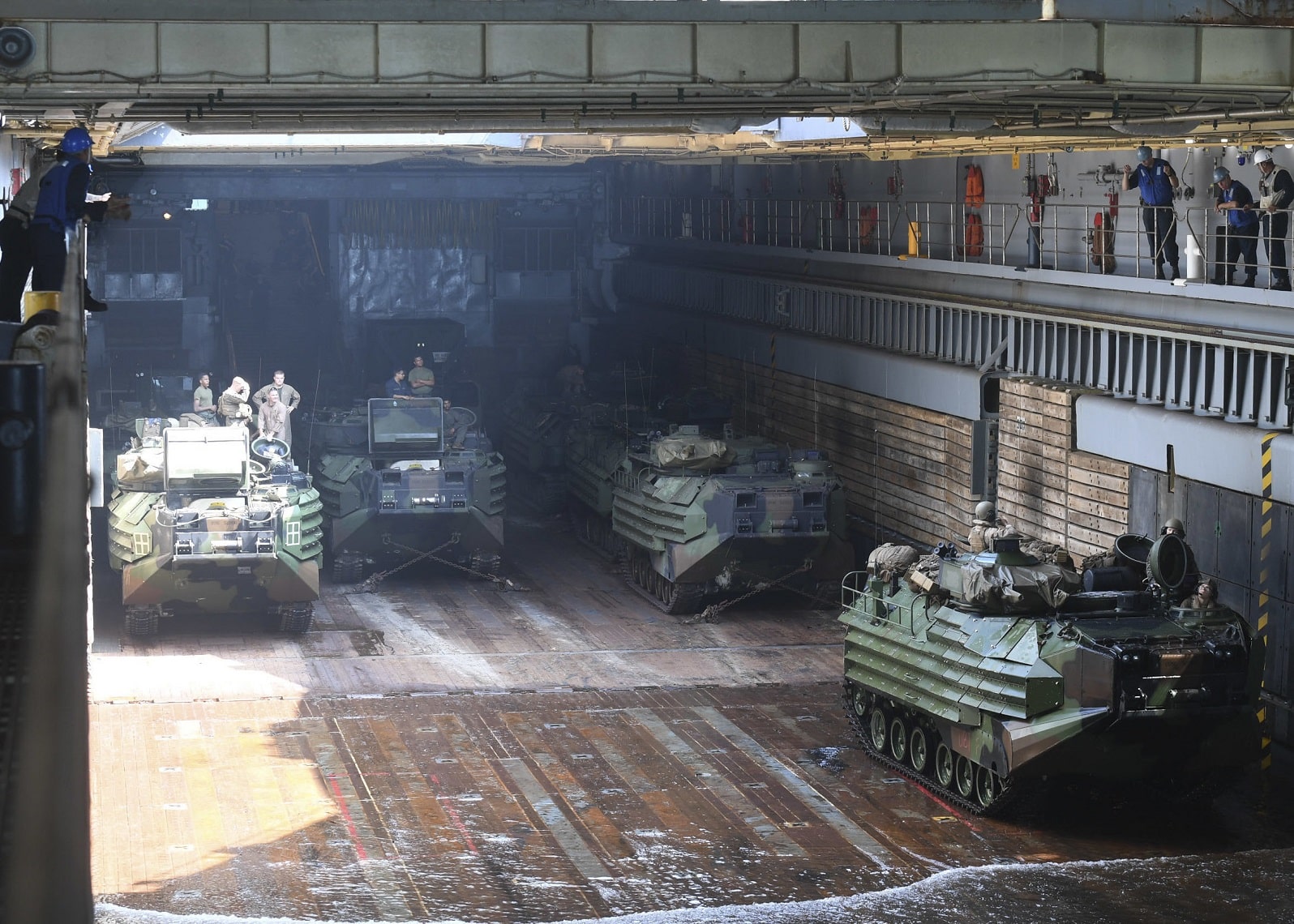U.S. Assault Amphibious Vehicles takes part in joint exercise with Indian BMP-2s
Posted on
U.S. Marines from 2nd Battalion, 2nd Marine Regiment, currently assigned to 3rd Marine Division, with its Assault Amphibious Vehicles takes parts in U.S.-India joint military exercise Tiger TRIUMPH.
Exercise organizers said Tiger Triumph is the first drill of its kind to include the U.S. military and all three of India’s armed services.
The nine-day exercise brought together more 500 U.S. Marines and Sailors, and 1,200 Indian sailors, soldiers and airmen.
Tiger TRIUMPH gives U.S. and Indian forces the opportunity to exchange knowledge and learn from each other as well as establish personal and professional relationships.
During Tiger TRIUMPH, U.S. and Indian forces conducted valuable training in humanitarian assistance disaster relief operations by inserting a joint and combined Indian and U.S. force from ship-to-shore in response to a hypothetical natural disaster. While on shore, the forces conducted limited patrolling, moved simulated victims to medical care and produced and distributed drinking water.
The key of the exercises became that U.S. Marines used their assault vehicles on a par with their Indian counterparts from 7 Guards unit, who drove on the Soviet-designed BMP-2 amphibious infantry fighting vehicles.
The BMP-2 is a second-generation, amphibious infantry fighting vehicle introduced in the 1980s in the Soviet Union, following on from the BMP-1 of the 1960s. The BMP-2 was fitted with a new two-man turret. The most obvious improvement being the replacement of the BMP-1’s non-stabilized 73 mm low velocity gun by a more versatile and effective fully-stabilized dual-fed 30 mm cannon.

The BMP-2 can cross water obstacles such as rivers and lakes but it is not intended for sea landing operations, unlike AAV.
The AAV is the current amphibious troop transport of the United States Marine Corps. It is used by U.S. Marine Corps Assault Amphibian Battalions to land the surface assault elements of the landing force and their equipment in a single lift from assault shipping during amphibious operations to inland objectives and to conduct mechanized operations and related combat support in subsequent mechanized operations ashore. It is also operated by other forces. Marines call them “amtracs”, a shortening of their original designation, “amphibious tractor”.
AAVs have a very diverse set of capabilities. They can be used for counter terrorism, mechanized assault, as well as humanitarian assistance operations. AAVs are favored by U.S. forces for their ease of naval landings in contested environments and their ability to deploy in the event of a natural disaster.


Subscribe to our newsletter
Promotions, new products and sales. Directly to your inbox.
